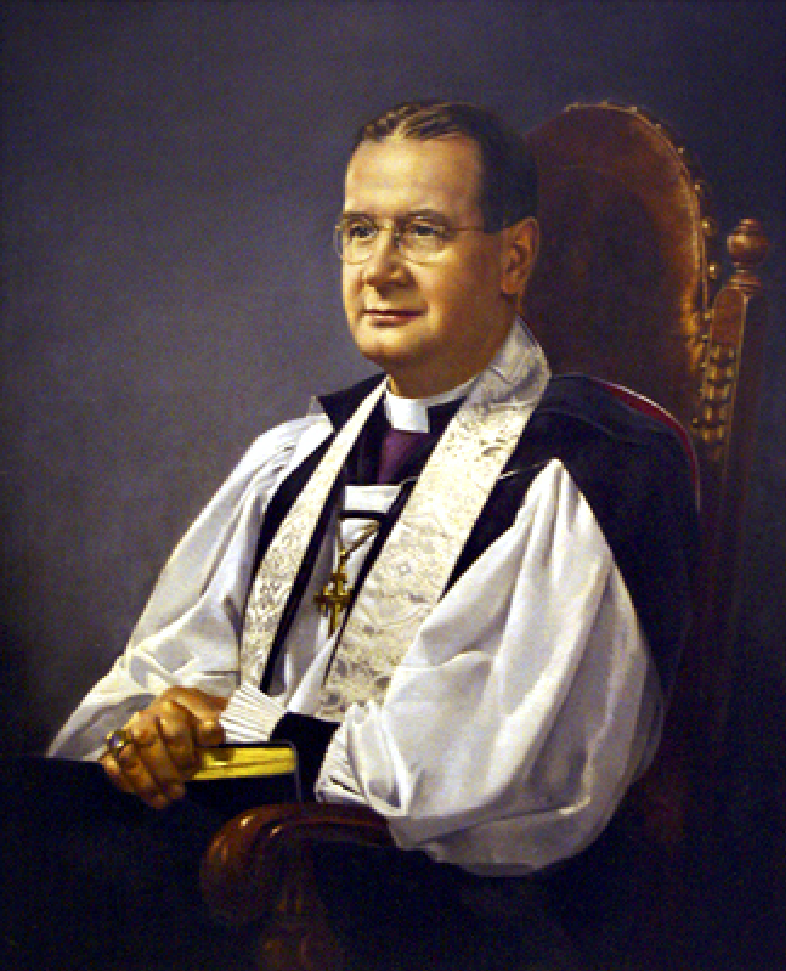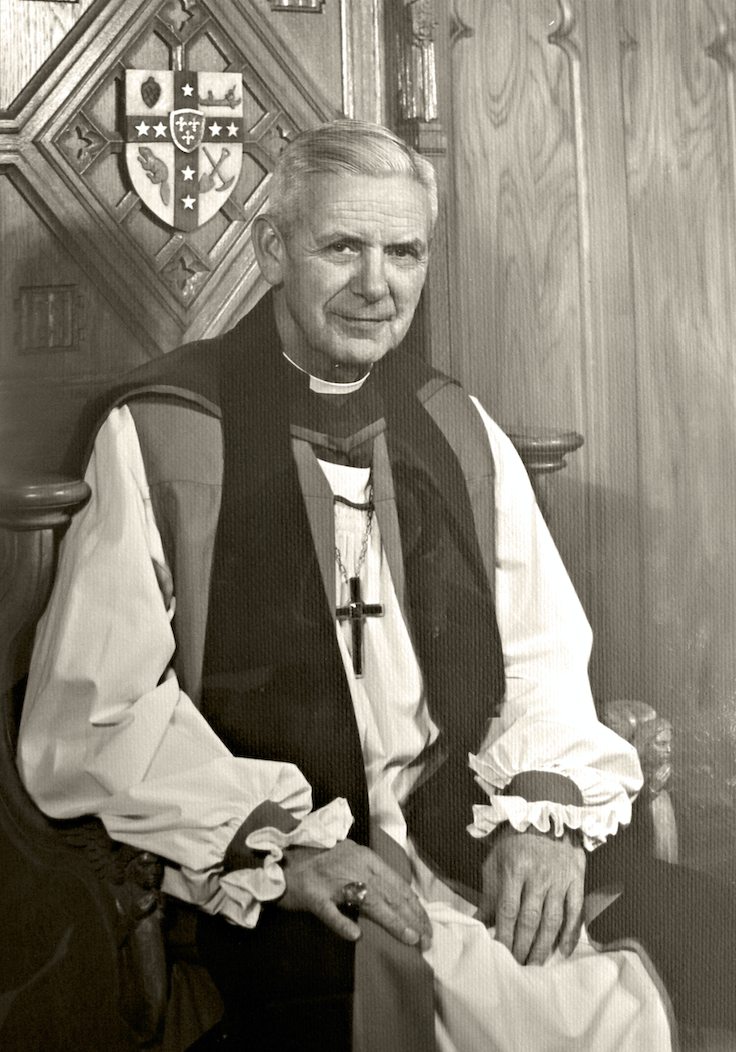Centennial Timeline
Timeline Color Key | Trinity Cathedral (Blue) | City of Phoenix, AZ (Brown)
Before 1900 | 1900-20 | 1920-40 | 1940-60 | 1960-80 | 1980-00 | 2000-20 | 2020-40 & Beyond
1940-60
1940
Luke Air Force Base opens and graduates its first class in June, Williams Air Force Base opens in December, and Falcon Field opens in nearby Mesa as a training location for British RAF pilots during World War II.
1940
Phoenix becomes an embryonic industrial city with the arrival of Motorola, Reynolds Aluminum, and other defense manufacturers during World War II.
1940
Walter H Dugan is called to Arizona by Bishop Mitchell to serve Spanish missions.
1941-1942
The Phoenix Housing Authority builds 3 new public housing developments: Marcos de Niza Project for Mexican-Americans, Matthew Henson Project for African-Americans, and Frank Luke Jr. Project for Whites.
1942, April 1
The Desert Training Center, formed by General George S. Patton, is created. This base replicated battle conditions in Africa during World War II. The base, located in the Mojave Desert in Southern California and the Sonoran Desert in western Arizona, stretched to within 50 miles of Phoenix.
1942, June 22
Thunderbird Field #2 opens in nearby Scottsdale. It was later renamed Scottsdale Airport.
1942
Japanese Americans from the western United States, including Phoenix, are relocated to internment camps. Two camps are located in Arizona at Sacaton and Poston.
1942
Alzona Park is built by the Federal Government as worker housing.
1942
Choirmaster and organist Arthur Smith dies suddenly after playing for a wedding. An obituary notes that Smith “found the soul of his organ, and it entered into his soul.” .John Doan, who succeeds him for the next three years, is an equally accomplished musician.
1943
June Camp Papago Park (POW camp) opens.
1943
Litchfield Naval Air Facility opens.
1944, December 23
The Great Papago Escape of German prisoners-of-war takes place. This event is the largest single escape by POWs in any camp in the United States during World War II.
1944
St. Monica’s Hospital, the first integrated hospital and school of nursing in Phoenix and anywhere west of the Mississippi River, opens. It later comes to be known as Phoenix Memorial Hospital. St. Monica’s is located just north of the San Pablo Mission.
1945
Arizona State Teachers College becomes Arizona State College.
1945
Dean Edwin Seldon Lane dies. Rev. William Roland Otto replaces him as fourth Dean until he dies less than five months later in 1946.
Photo: Dean William Roland Otto

1945
Upon the retirement of Bishop Walter Mitchell, the House of Bishops elects the Rev. Arthur Barksdale Kinsolving to be Bishop of the Missionary Jurisdiction of Arizona.
Photo: Bishop Arthur Barksdale Kinsolving, 1945-1962

1940s-1950s
Growth skyrockets to a total of 1,800 families with a Sunday School serving 1,000 students, making Trinity one of the largest parishes in the country.
Photo Top: Many of the Cathedral’s children in front of Atwood House in 1950
Photo Center: Trinity Cathedral’s nave is filled to capacity in 1950
Photo Bottom: Coffee hour after services in 1950



1945-1969
William Fairfield Brown, organist and choirmaster, establishes Trinity as a primary musical center for the City of Phoenix. He has several choirs at Trinity, including a full adult choir and a junior choir. He is also involved with the Phoenix Symphony. He serves as Arts and Music Director for the Phoenix Civic Opera Association and is Music Director for both the Phoenix Musical Theater and the Phoenix Little Theater. He directed Murder in the Cathedral, a dramatic re-telling of the martyrdom of Archbishop Thomas Becket. The play was reenacted in the Cathedral chancel and several other sites on the Cathedral property. He offered choral and organ programs at the Cathedral as well.
Photo: The Choir and orchestra perform in Atwood House, 1950.

1946
The Vestry calls Rev. James W. F. Carmen to be the Fifth Dean of Trinity Cathedral. Rev Morton Trippe Kelsey is appointed assistant to Dean Carmen to serve primarily as the leader of programs for young people.
Photo: Dean Carman officiating the baptism of two infants.

1946-1956
James W. F. Carman presides over the establishment of the Junior Church, organized for the benefit of young people in the church, with its own Vestry. He oversees incredible growth in the congregation that eventually spurred the establishment of Episcopal churches in high-growth areas as the metro Phoenix area expanded.
Photo: Nativity scene at the altar with choir and a gathering of children.

1940s
The Episcopal Young Churchmen (EYC) is established. The group is involved in many outreach projects.
1956
Dean Carmen, after experiencing ten years of growth resigns to become Bishop of Oregon. The Rev. Thomas M. W. Yerxa is appointed the Sixth Dean of Trinity Cathedral.
Photo: Dean Tomas M W Yerxa, 1956-1958.

1958
Dean Yerxa leaves his wife and children in the Deanery and disappears. Somewhere, a soprano in the choir was involved. Mr. Yerxa is defrocked and not allowed to return to Phoenix. Paul Roberts becomes the Interim Dean.
1959-1964
Rev. George Rhys Selway is selected by the Vestry and Bishop to become Seventh Dean of Trinity Cathedral and serves until he is elected Bishop of Northern Michigan.
Photo: Dean George W Selway, 1958-1964

1959
The General Convention of the Episcopal Church abolishes the Missionary Jurisdiction of Arizona and establishes the Episcopal Diocese of Arizona. Arthur Barksdale Kinsolving continues as Bishop of the newly established Diocese.


